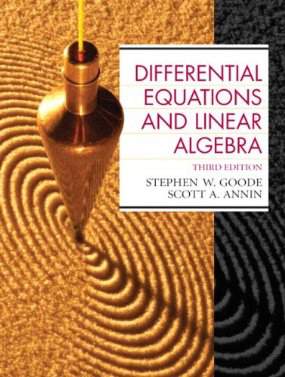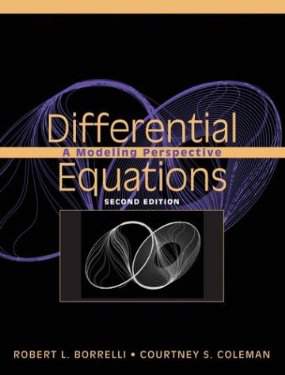Click video to play

This is a quick preview of the lesson. For full access, please Log In or Sign up.
For more information, please see full course syllabus of Differential Equations
For more information, please see full course syllabus of Differential Equations
Differential Equations Separable Equations
Lecture Description
In this lesson, our instructor Will Murray gives an introduction on separable equations. He explains the technique used to solve separable equations as well as adding the constant to your integration.
Bookmark & Share
Embed
Share this knowledge with your friends!
Copy & Paste this embed code into your website’s HTML
Please ensure that your website editor is in text mode when you paste the code.(In Wordpress, the mode button is on the top right corner.)
×
Since this lesson is not free, only the preview will appear on your website.
- - Allow users to view the embedded video in full-size.
Next Lecture
Previous Lecture










































 Answer Engine
Answer Engine






1 answer
Mon Apr 4, 2016 11:44 AM
Post by Shih-Kuan Chen on March 31, 2016
In example 4, why isn't y equal to + or - that whole business?
3 answers
Mon Jan 4, 2016 12:29 PM
Post by Jonathan Snow on December 22, 2015
I have a quick question about the plus or minus K in example 1, why is it plus or minus? If k=e^c, k can't be a negative number right?
1 answer
Fri Oct 30, 2015 4:14 PM
Post by Aisha Alkaff on October 29, 2015
Hello Dr. Murray,
Thank you for your clear explanation. It really helped me a lot.
but i have a question in Example 2:
why wouldn't we just simplify y^2 byt taking the square root?
1 answer
Sun May 3, 2015 7:38 PM
Post by Tsz Hong Chow on April 29, 2015
Hi, have you taught Bernoulli equations? I badly need this lecture
1 answer
Mon Aug 25, 2014 6:42 PM
Post by Joseph Green on August 24, 2014
will there be any practice problems added to this lecture?
1 answer
Sat Jul 5, 2014 6:07 PM
Post by Josh Winfield on June 30, 2014
Hello,
Why do you not write y' and y as functions of x, but you clearly do for the "coefficients" P(x) and Q(x), it bugs me a little. Is it because you want to highlight that y and y' are the variables your solving for, or just to make the equation a tad more clean. I can't help but leave y and y' as functions of x when i do all problems, is this incorrect?
Regards
Josh
1 answer
Tue Feb 25, 2014 4:49 PM
Post by Ahmed Obbad on February 24, 2014
Hi professor, could you please explain me why the additive constant does not satisfy the differential equation while the multiplicative constant do? what if we keep it as Y=e^(x/2+ c)is this wrong?
1 answer
Tue Jan 14, 2014 11:47 AM
Post by cigdem drahman ozkan on January 8, 2014
Hi professor, Could you kindly explain me; in second example, why we just ignore 2C? and wrote as new constant K?
1 answer
Fri Jul 5, 2013 10:19 AM
Post by xueping liu on July 2, 2013
Hi Dr.Murray
Your videos are awesome.They helped so much. But I also want to find some exercises for the related topic without buying those books. Do you have any suggestions?
Thanks
3 answers
Tue Apr 16, 2013 8:32 PM
Post by Mohammed Alhumaidi on April 6, 2013
This is an enjoyable experience, at least I do understand something now rather than in class lecturing, why is it the case though Prof, Murray